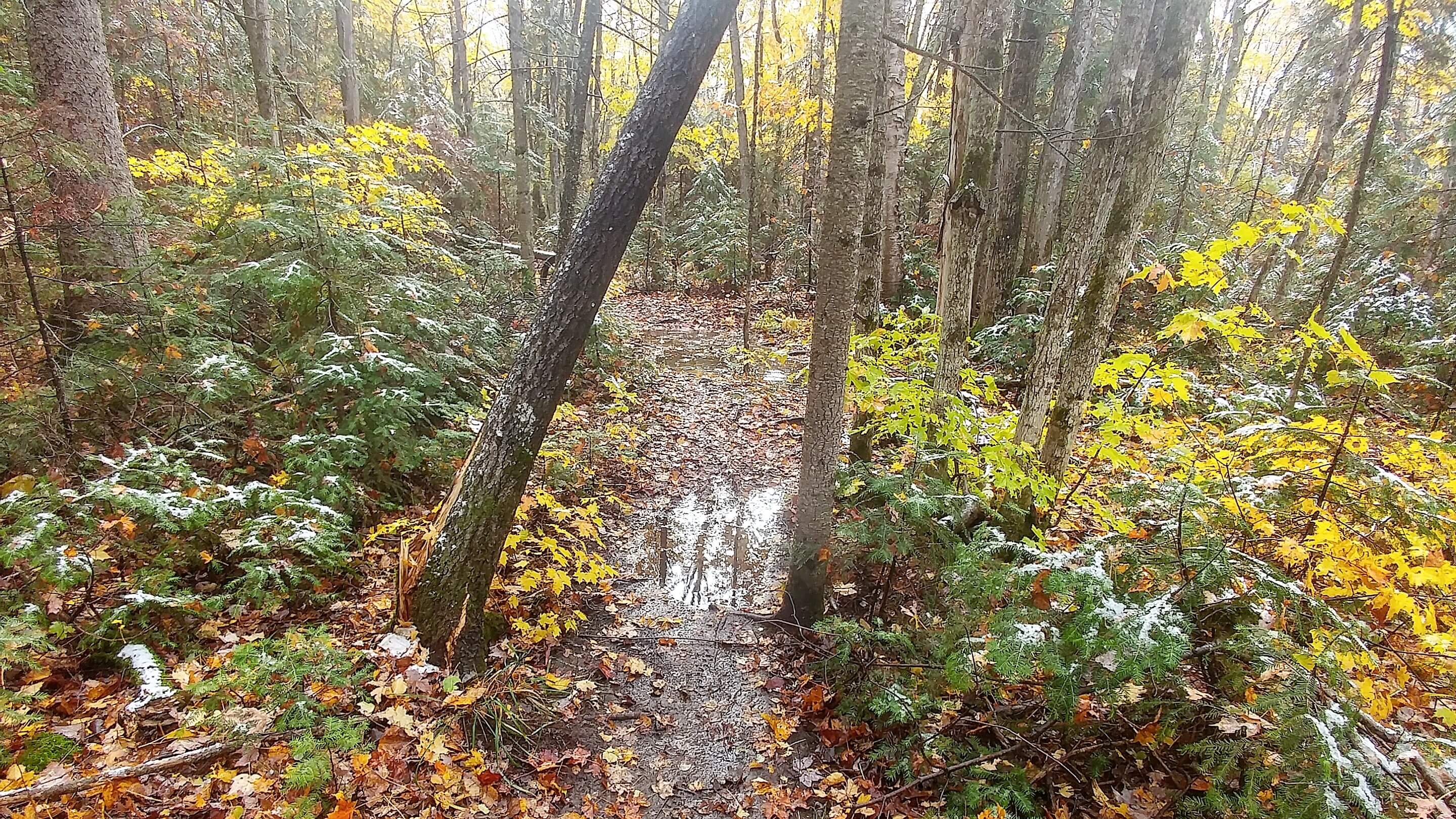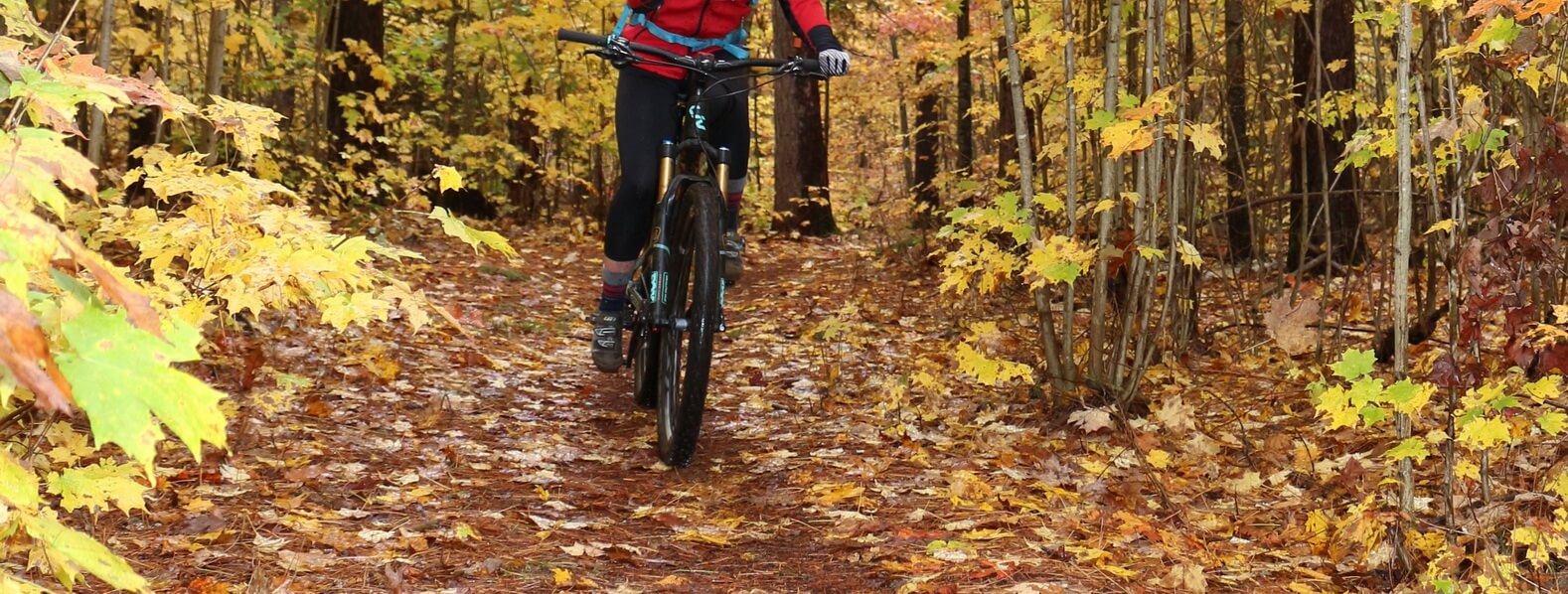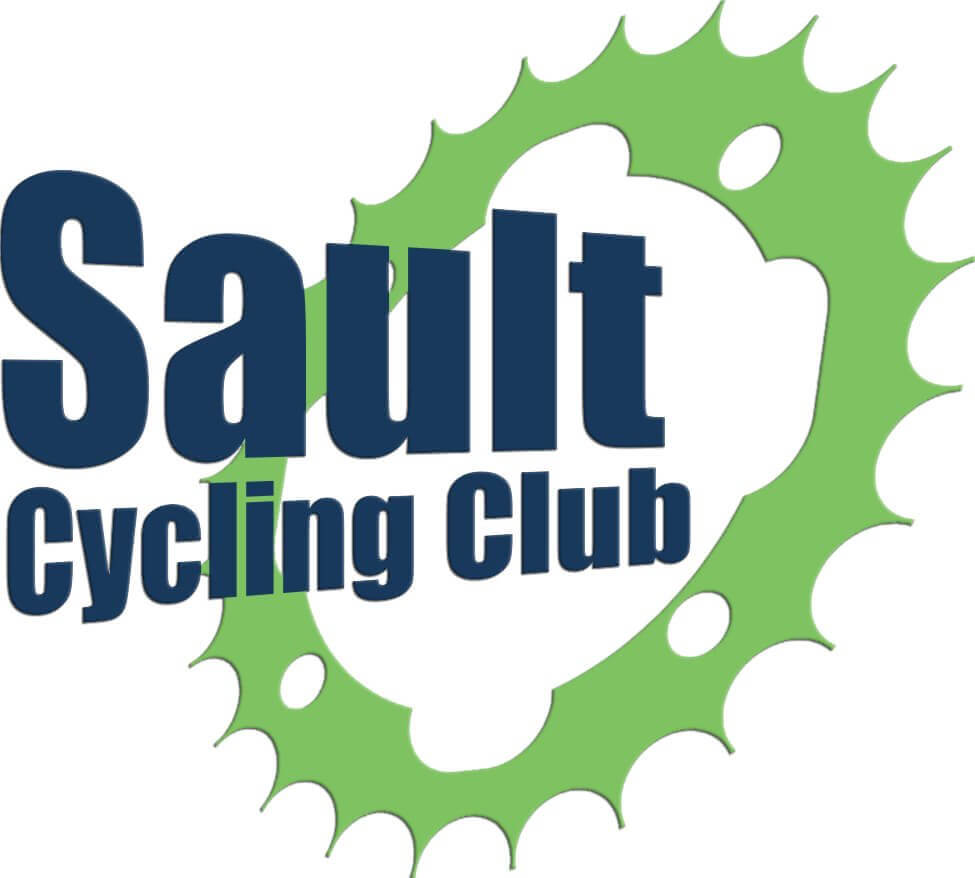We Get Questions…Leaf Blowing

This week we were asked about blowing leaves from the trails:
“Just wanted to pick your brains on this as this is a topic that is not unique to our club. First off, to those volunteers who have been clearing tree fall, as well as those who regularly clear leaves: Thank you
On the topic of clearing leaves, we are at the time of year when the leaves are falling. The trails are already covered and there are still many more leaves to come down.
While this makes the trails a bit more slick and challenging to navigate I think there is some importance to leaving some of the leaves on the ground to decay and help replenish the soils on the trails.”
Blowing the leaves from the trail has become a regular activity at Hiawatha. I think everyone can appreciate the awesomeness of riding on a freshly blown trail. To blow leaves, or not to blow leaves is a good thing to ask as it relates to the sustainability of our trails.

The decision to blow the leaves or not to blow the leaves depends on the specific circumstances of the trail…there is no single, right answer. Considerations include:
Soil Type – coarse, well drained soils (e.g., sands) can support additions of organic matter and maintain their riding and drainage characteristics better than fine textured soils (e.g., silts and clays). Additions of organic matter increase the water holding capacity of the soil – this is generally a negative for trails where we are trying to keep water off of and out of the trail. Higher organic matter content also reduces the compactability/trafficability of the soil. Translation: higher organic matter increases risk of unsustainable trails.
Traffic Volume – high traffic volumes can break down the leaves more quickly and keep the dirt of the trail exposed. High traffic volumes can also create negative impacts from braiding (because riders can’t see where the trail tread is) and from riding on saturated trails (because the leaves are retaining the water).
Forest Type – deciduous forests (e.g., maple, oak, poplar, birch) produce enough leaves that trails will become obscured very quickly without some blowing. When the trail is obscured riders (and walkers) will wander from the established trail tread, which can lead to trail braiding. If the tread is blown, people will follow the cleared path (and existing braids can rehabilitate without any further action because they are obscured). In conifer forests (e.g., pine and spruce) less leaf litter is generated but it breaks down more slowly. I think we get enough riders in the pines, that we do not get any appreciable build up on the trails.
Safety – as noted in the original question, blown trails are less slippery and obstacles in the trail tread are visible to users. Wooden features can be particularly slippery if covered in wet leaves.
Drainage – blown trails have the potential to dry faster in spring because leaves will not be trapping moisture in the soil and the tread is exposed to more light and wind. Drier trails reduce the risk of rutting from use when conditions are poor. The down side of cleared trails is that frost damage (e.g., churning of the soil from freeze/thaw) can occur because there are no leaves insulating the soil.
One of IMBA’s rules about sustainable trail construction is to start by removing all of the organic matter from the trail tread. The reason is organic matter does not compact well. It is difficult to form a durable trail surface that sheds moisture with high organic matter. Soft trail surfaces lead to erosion and wet trails create muddy, problem, trail areas (e.g., start of Root’n, Tricky Bit).
Blowing the leaves from our trails is beneficial for water management and safety reasons. Even when the trails are blown, we can still enjoy Algoma’s tremendous show of colour because nature provides us with an abundance of leaves.

And no matter how aggressively we try to blow the leaves, nature will always work to put them back on the trail!
In a future post, I will talk about trail design and improvements to avoid some of the issues identified here (i.e., leaves are only the tip of the iceberg when it comes to sustainable trails).
Peter
| This post is the beginning of what may become a series of posts about trails. Topics might include maintenance, construction, design and anything else at least vaguely related to trails that people want to hear about. Do you have things (trail related) that you wonder about? Send me your questions….Peter@SaultCyclingClub.ca |
